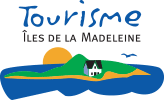

Once a lagoon, this environment was disrupted in 1956 by the construction of Route 199, and its links with the sea were considerably restricted. Since that time, the water level has dropped significantly, creating small islands of vegetation used by waterfowl as nesting sites.
During the migration period, shore birds take advantage of this lower water level to seek food on the mud flats. This is now a rich environment for birdlife (avifauna), and one where rare birds are often sighted. A migratory bird sanctuary was created here, where hunting is forbidden. This area is identified by blue Canadian Wildlife Service signs.
Observation from the side of the road or while walking on the beach.
In addition to the waterfowl, there is also a colony of Common Black-headed Gulls (Larus ridibundus) and Bonaparte's Gulls (Larus philadelphia). Canada Geese (Branta Canadensis) nested here in the summers of 2004 and 2005. During the autumn migration period many different species of shorebirds can be found here. A number of Piping Plovers, a species threatened for survival worldwide, nest year after year on the beach along Havre-aux-Basques Bay. Regular sightings of the Northern Harrier (Circus cyaneus) are reported. During the winter, the sand dunes at Havre-aux-Basques are a very good spot for the observation of the Common Redpoll (Carduelis flammea), the Snow Bunting (Plectrophenax nivalis), the Snowy Owl (Nyctea scandiaca) and the Rough-legged Hawk (Buteo lagopus).
Follow Route 199 between Cap-aux-Meules Island and Havre-Aubert Island.